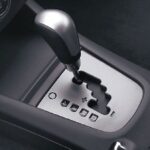The Louisville interchange, famously known as the Spaghetti Junction, is a complex network where I-64 and I-65 intersect. This busy interchange is a critical artery for trucking, featuring intricate lane splits, multiple ramp meters, and varying bridge decks. Due to high traffic volume and frequent lane changes, it’s considered an accident hotspot, demanding heightened attention for safe merge practices. Clear signage helps guide drivers, but navigating this maze, especially during night driving, remains challenging. Understanding the layout and key safety measures at Louisville’s Spaghetti Junction is essential for truckers aiming to maintain smooth, safe trucking operations through this pivotal interchange.
2. Key Features of the Spaghetti Junction: Lane Splits, Ramp Meters, and Signage
The Louisville interchange’s Spaghetti Junction is defined by its complex lane splits, which require truckers to plan lane changes well in advance to ensure a safe merge. These splits can be abrupt, especially near bridge decks where visibility narrows. Ramp meters play a crucial role in managing traffic flow, regulating vehicles entering the highway to reduce congestion and minimize collision risks in this accident hotspot. Signage is strategically placed but can be overwhelming, especially during night driving when glare and limited visibility challenge even experienced drivers. Clear, consistent signage guides truckers through the maze, highlighting upcoming lane merges and ramp exits critical for maintaining smooth trucking operations. Understanding how these elements interact helps truck drivers anticipate maneuvers, ensuring safer passage through Louisville’s busiest interchange.
3. Lane-by-Lane Diagram: Understanding the Bridge Deck and Traffic Flow
Navigating the Louisville interchange demands a clear grasp of its lane-by-lane layout, especially around the bridge deck where traffic converges and splits. The Spaghetti Junction features multiple lane splits that occur rapidly, requiring truckers to commit early to their intended route for a safe merge. Each lane on the bridge deck serves distinct traffic flows — some lead to I-64 eastbound ramps, others toward I-65 southbound. Ramp meters regulate entry points just before the bridge, smoothing traffic and reducing bottlenecks at these critical junctures. Signage positioned before and on the bridge deck provides essential cues, but heavy traffic and night driving can complicate lane decisions. By visualizing the lane-by-lane diagram and anticipating lane splits early, truck drivers can maintain safe merges, avoid last-minute lane changes, and navigate this accident hotspot with confidence — ensuring smoother, safer trucking through Louisville’s complex interchange.
4. Timing Guide for Safe Merge: Peak Hours, Night Driving, and Off-Peak Strategies
- Peak Hours (7–9 AM, 4–6 PM): Expect heavy congestion at the Louisville interchange; plan merges early to avoid abrupt lane splits and use ramp meters to regulate entry smoothly.
- Night Driving: Reduced visibility and glare from signage demand extra caution. Slow your speed near the bridge deck and rely on reflective markers for safer merges.
- Off-Peak Strategies: Take advantage of lighter traffic to position your truck well before merges, minimizing sudden lane changes at this notorious accident hotspot.
- General Tip: Monitor local traffic updates and adjust timing to evade rush-hour bottlenecks, ensuring safer, smoother trucking through the Spaghetti Junction.
5. Common Challenges: Accident Hotspot Analysis and Tips for Trucking Safety
Navigating the Louisville interchange, or Spaghetti Junction, presents several challenges that contribute to its reputation as an accident hotspot. Key difficulties include:
- Abrupt Lane Splits: Sudden lane changes near the bridge deck often force last-minute merges, increasing collision risk.
- Ramp Meter Timing: Misjudging ramp meter flow can lead to unsafe merging gaps or sudden stops.
- Signage Overload: Excessive signs, especially during night driving, can overwhelm truckers, causing missed exits or unsafe lane shifts.
- Heavy Traffic Congestion: Peak hours amplify pressure on truck drivers to merge safely amid dense traffic.
- Limited Visibility: Night driving reduces depth perception and reaction time on complex ramps.
- Trucking Safety Tips:
- Plan lane positioning well in advance to execute a safe merge.
- Use ramp meters as cues for smooth entry timing.
- Reduce speed near the bridge deck and rely on reflective signage at night.
- Stay updated with traffic alerts to avoid peak congestion.
- Maintain extra following distance to allow for sudden stops.
By anticipating these challenges, truckers can navigate Spaghetti Junction with greater confidence and safety.
6. Best Practices for Trucking Through Louisville Interchange: Maneuvering and Communication
Mastering maneuvering and communication is key to a safe merge through Louisville’s Spaghetti Junction. Always plan your lane changes well before approaching the complex lane splits near the bridge deck to avoid last-minute moves that increase accident risk. Use ramp meters as natural pauses to gauge traffic flow and enter smoothly. Maintain steady speeds and avoid sudden braking, especially during night driving when reduced visibility demands heightened focus on reflective signage.
Effective communication is equally vital. Signal lane changes early and clearly to alert surrounding vehicles, reducing collision risks in this accident hotspot. Utilize CB radios or fleet communication systems to share real-time traffic updates and potential hazards. Consistent awareness and proactive signaling ensure safer trucking through Louisville interchange, helping drivers confidently navigate this challenging nexus while minimizing disruptions and maintaining flow. Prioritize these best practices to transform the Spaghetti Junction from a daunting tangle into a manageable route.
7. Conclusion: Enhancing Safety and Efficiency at Kentucky’s Busiest Interchange
Navigating Louisville’s I-64/I-65 interchange — familiarly known as the Spaghetti Junction — demands heightened awareness and strategic planning for every trucker. Throughout this guide, we’ve explored the unique challenges posed by this complex, heavily trafficked hub, including its intricate ramps, frequent congestion, and unpredictable traffic patterns. By understanding the interchange’s design and common traffic behaviors, truck drivers can better anticipate merging points and lane changes, reducing accident risks.
Implementing proven safety techniques, such as maintaining safe following distances, using advanced route planning tools, and adhering strictly to posted speed limits, is crucial for smooth passage. Equally important is leveraging technology and local insights to avoid peak congestion periods, improving both safety and delivery efficiency. Coordination with dispatchers for real-time updates and continuous driver training on interchange-specific protocols further enhances outcomes.
Ultimately, mastering Louisville’s Spaghetti Junction isn’t just about surviving the interchange — it’s about thriving through it. By combining knowledge, preparation, and vigilance, trucking professionals can safeguard themselves, optimize freight movement, and contribute to safer roads across Kentucky’s busiest interchange. For those ready to put these skills into action,view open positions and become part of a team that values safety and efficiency at the heart of trucking through Louisville.
FAQ
- 1. What is the Spaghetti Junction in Louisville?
The Spaghetti Junction refers to the complex interchange of I-64 and I-65 in Louisville, Kentucky, known for its intricate network of ramps and lanes.
- 2. Why is the I-64/I-65 interchange challenging for truck drivers?
The interchange has multiple closely spaced exits and merges, heavy traffic, and frequent lane changes, making navigation difficult, especially for large trucks.
- 3. What are some safety tips for trucking through the Spaghetti Junction?
Plan your route in advance, stay alert for changing traffic patterns, maintain a safe following distance, use proper signaling, and avoid sudden lane changes.
- 4. Are there alternative routes to avoid the Spaghetti Junction for trucks?
Depending on your destination, some local routes or bypasses may reduce the need to navigate the interchange, but always check current traffic and road conditions.
- 5. How can truck drivers prepare for driving through the Louisville interchange during peak hours?
Try to schedule trips during off-peak hours, monitor traffic updates, and ensure your vehicle is in good condition to handle stop-and-go traffic safely.














